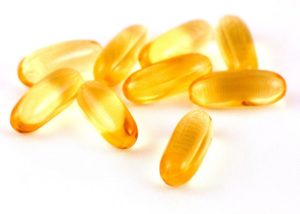 A recent study published in BMJ (British Medical Journal) found a link between high consumption of ultra-processed food and higher rates overall of cancer, but also a higher risk of breast cancer. Specifically, a 10% increase in the proportion of ultra-processed foods in the diet was associated with a greater than 10% increase of overall cancer and 11% increase of breast cancer during the 6+ years of the study.
A recent study published in BMJ (British Medical Journal) found a link between high consumption of ultra-processed food and higher rates overall of cancer, but also a higher risk of breast cancer. Specifically, a 10% increase in the proportion of ultra-processed foods in the diet was associated with a greater than 10% increase of overall cancer and 11% increase of breast cancer during the 6+ years of the study.
Alarmingly (because of the health implications), several surveys (in Europe, the US, Canada, New Zealand, and Brazil) have suggested that ultra-processed food products are now between 25 to 50% of calories eaten every day.
Ultra-processed food is food that is highly processed. It is food that is mass produced and packaged, as well as foods that have manufactured substances in them - such as hydrogenated oils (also contains trans fats), protein isolates, additives, preservatives, artificial or natural flavors, colors, nitrites (in processed meat), titanium dioxide (nanoparticles), etc.
The food packaging can leach chemicals such as pthalates (endocrine disruptors). The list goes on and on and on. All of these things in ultra-processed foods may be involved in causing health problems, including cancer.
They are typically also poorer nutritionally and higher in salt than unprocessed or minimally processed foods. These ultra-processed foods that are so popular are all around us - in fast food, in mass produced desserts and breads, packaged snacks, soups, cold cuts, margarine, frozen or shelf stable ready to eat meals, instant foods, sodas and drinks, etc.
On the other hand, unprocessed or minimally processed foods are fresh, dried, ground, chilled, frozen, pasteurised, or fermented foods such as fruits, vegetables, legumes (beans), rice, pasta, eggs, meat, fish, or milk. There are also “processed culinary ingredients” which are salt, vegetable oils, butter, sugar, and other substances extracted from foods and used in kitchens to transform unprocessed or minimally processed foods into "culinary preparations" (meals).
The study did NOT find any association with unprocessed, minimally processed, or processed culinary ingredients with cancer. Only with the ultra-processed food. Instead, the study found that higher consumption of “minimally/unprocessed foods” (and lower ultra-processed food) was associated with lower risks of overall cancer and breast cancer.
So an apple is unprocessed, and plain apple sauce made with just apples is minimally processed, while a packaged apple dessert with additives added is ultra-processed. Think of it as "transformed food". Also keep in mind that your beneficial gut microbes like unprocessed or minimally processed food - especially those high in fiber. You know - a diet rich in fruits, vegetables, whole grains, seeds, nuts, legumes (beans). ...continue reading "Ultra-Processed Food and Risk of Cancer"

 This article by academic physician and cancer researcher H. Gilbert Welch about viewing cancers as a barnyard pen of animals (birds, rabbits, and turtles) is a way to explain why some early screening tests haven't really reduced the rate of deaths from certain cancers, such as breast cancer (
This article by academic physician and cancer researcher H. Gilbert Welch about viewing cancers as a barnyard pen of animals (birds, rabbits, and turtles) is a way to explain why some early screening tests haven't really reduced the rate of deaths from certain cancers, such as breast cancer ( Prostate cancer is something that men worry about, especially because it is the most common cancer in men, and because it can take several forms. On one hand, a tumor can be "
Prostate cancer is something that men worry about, especially because it is the most common cancer in men, and because it can take several forms. On one hand, a tumor can be " The findings of a
The findings of a  There has long been concern over the chemicals in hair dyes and chemical hair straighteners or relaxers, and whether they are linked to various cancers. Studies have had mixed findings with regard to breast cancer, but a review paper concluded that there is evidence to support a role of hair product use in the risk of early onset breast cancer, especially in African-American women. Other studies found that long term users of dark hair dyes have a significantly increased risk of non-Hodgkin's lymphoma, multiple myeloma, and bladder cancer.
There has long been concern over the chemicals in hair dyes and chemical hair straighteners or relaxers, and whether they are linked to various cancers. Studies have had mixed findings with regard to breast cancer, but a review paper concluded that there is evidence to support a role of hair product use in the risk of early onset breast cancer, especially in African-American women. Other studies found that long term users of dark hair dyes have a significantly increased risk of non-Hodgkin's lymphoma, multiple myeloma, and bladder cancer.  Two more studies found that higher levels of vitamin D in the blood are associated with better health outcomes - one study found a lower risk of breast cancer, especially among postmenopausal women, and in the other - better outcomes after a metastatic melanoma diagnosis.
Two more studies found that higher levels of vitamin D in the blood are associated with better health outcomes - one study found a lower risk of breast cancer, especially among postmenopausal women, and in the other - better outcomes after a metastatic melanoma diagnosis. Should the results of this study determine what kind of coffee one drinks? Does it really make a difference? Eh...Not for me (because all coffee seems to be beneficial), but it might for you.
Should the results of this study determine what kind of coffee one drinks? Does it really make a difference? Eh...Not for me (because all coffee seems to be beneficial), but it might for you. This is a thought-provoking study that looked at environmental quality and cancer incidence in counties throughout the US. The researchers found that the more polluted the county, the higher the cancer incidence. An
This is a thought-provoking study that looked at environmental quality and cancer incidence in counties throughout the US. The researchers found that the more polluted the county, the higher the cancer incidence. An